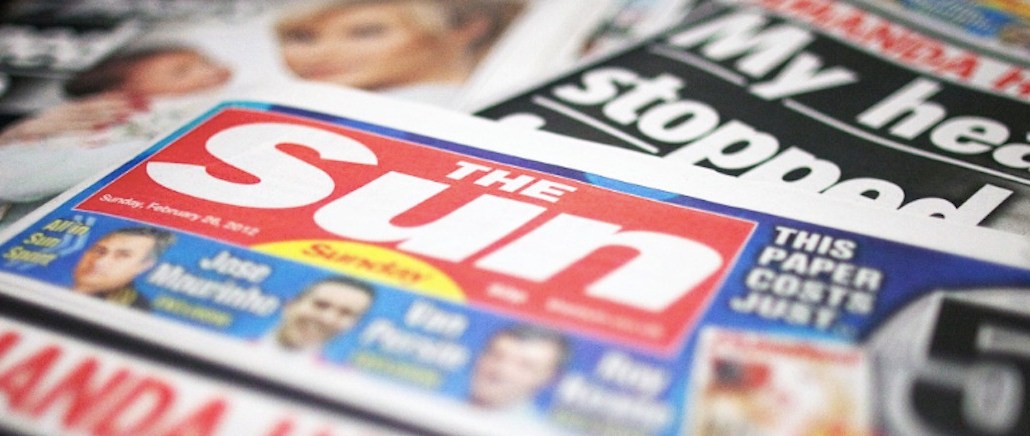
Only a year since its launch, News U.K.’s content studio, Method, can boast dwell times on its brand-funded articles of nine minutes, matching the time readers spend on its editorial content, according to the company.
But it has been a slow and steady road, by digital-media standards anyway. The content studio started life as Newsroom, but the name proved too much for an industry struggling to untangle the old church-and-state divide.
“The first half of the year was mired in working out how we were going to communicate to the industry where the commercial and editorial wall was,” explained Tiffanie Darke, creative content director at Method, which runs commercial content across The Sun, The Times and The Sunday Times. “Internally we’re very clear that commercial content is produced independently from editorial, but we share the same values as editorial.”
The second half of the year has seen a push toward creating longer partnerships with clients and content that goes beyond standard advertorial. For example, a yearlong partnership with Vodafone, started this summer, has led to the release of “Ready Business Britain,” a hub focusing on solving business challenges.
This particular article about overseas money transfer service, Transferwise, written by Method’s editorial team with collaboration from Vodafone in August, had an overall average dwell time of 9.3 minutes. “Ready Business Britain” overall has an average dwell time of 2.64 minutes, surpassing its target of 1.20 minutes, according to Darke.
All commercial content is available outside of the News U.K. paywalls on its websites, but the apps are a different story — readers need to be subscribers to see commercial content here. Method has enough first-party data from News U.K.’s subscription services to build a pretty good understanding of its readers, so it can change its tactics accordingly.
“For Vodafone, we noticed we were seeing good engagement on tablet for The Times and Sunday Times, so we optimized by shifting more digital attention onto tablet,” said Darke. The Vodafone hub was given more visibility, treated like one of its own supplements.
For Vodafone, it is finding ways to engage its readers beyond its content, through launching mentor schemes and running business-focused events.
Reminding the industry about what newspapers can do
Darke explained that Method’s biggest challenges have been proving the worth of newspapers and reminding the industry of how engaged readers are.
The average session length per visit on The Times tablet app is 40 minutes, rising to 60 minutes for Sunday Times. “Newspapers are uniquely positioned as trusted sources for their audiences,” she said. “They have a singular nature with its readers. That’s a valuable place to be.”
This is a group effort, Darke said. Method is working with the Telegraph’s Spark, Guardian Labs and Trinity Mirror’s Invention to be more collegial as an industry. “We do pitch against each other, but we’re also pitching against outdoor, radio and TV. We each have our strengths around our own particular audiences.”
Smartphones and The Sun
The Sun’s paywall will be coming down at the end of this month, but Britain’s best-selling newspaper in print hasn’t fared quite so well with its online paywall. Audit Bureau of Circulation figures show its digital audiences peaked just above 1.1 million daily visitors in September.
This puts it in seventh place behind heavyweights like the Mail Online (13 million) and the Guardian (8 million). And U.K. media agencies are unsure as to whether The Sun will rebound in a more competitive market.
In the coming months Method will be dialing up its commercial content on mobile for The Sun, according to Darke, who is confident it will see “extraordinary reach without the paywall.”
Video will also play a key role here too, since parent company News Corp’s acquisition of video ad tech company Unruly in September will allow it to scale its reach across video.
“The Sun has always been about scale. It’s where people go for the national conversation. It makes sense for the digital products we make to take advantage of that scale.”
More in Media

WTF is behind the explosion of faceless creators?
Brands are rapidly increasing their spending on faceless creators, showing the unique benefits of working with this type of influencer.

In Graphic Detail: As ‘Grow a Garden’ booms, a new report shows the marketing power of Roblox
The explosive growth of “Grow a Garden” has brought new attention to Roblox — and rejuvenated marketers’ interest in its advertising power.

Brand deals surge for golf creators as the sport’s popularity spikes
Golf is booming, and so is influencer marketing. As a result, golf creators are signing an unprecedented number of brand deals in 2025.





